Clovis & Fresno Orthodontics for All Ages
Serving Smiles to Children, Teens, & Adults
Orthodontic care at DiCiccio Freeman Orthodontics is designed for patients of all ages, from young children to teens and adults. Whether it’s early treatment for kids, braces for teens, or clear aligners for adults, we offer customized solutions to fit every stage of life.
Orthodontics for Children

Starting Smiles Strong
Bringing your child in for an early consultation puts their smile on track to develop healthily and happily.
Dr. Pat DiCiccio, Dr. David Freeman, and Dr. Lucas DiCiccio work hard to make sure your child is comfortable in our office and in one of our chairs.
From there, it’s all about checking for any potential problems that might arise in their future as they grow. It’s our job to catch and protect their young smiles as they develop.
How Early Treatment Works
By age seven, your child’s mouth will start to show the early signs of jaw development and any emerging permanent teeth. Dr. DiCiccio, Dr. Freeman, or Dr. Lucas will examine your child’s growth to start early orthodontic planning and set them up for a future of healthy smiles.
Early assessments during your child’s younger years can pinpoint developing issues and allow us to use simpler, more effective, and often cheaper treatments than if waiting to treat later.
Laying the Foundation
After your child’s first evaluation, Dr. DiCiccio, Dr. Freeman, or Dr. Lucas may recommend starting early treatment, or Phase 1, to target any potential orthodontic problems.
Phase 1 usually lasts eight to 12 months and uses personalized treatments to guide the development of your child’s face and jaw. This movement sets the groundwork for a well-balanced smile.
After Phase 1, your child will continue to come in for regular check-ups so we can keep an eye on new teeth eruptions and decide if further Phase 2 treatment is necessary.
Precision With Phase 2
Phase 2 treatment usually begins around the ages of 11–14, when most of your child’s adult teeth are in place.
If we notice that your child’s smile needs an extra hand, Dr. DiCiccio, Dr. Freeman, or Dr. Lucas will craft another personalized treatment plan that puts the final touches on their smile.
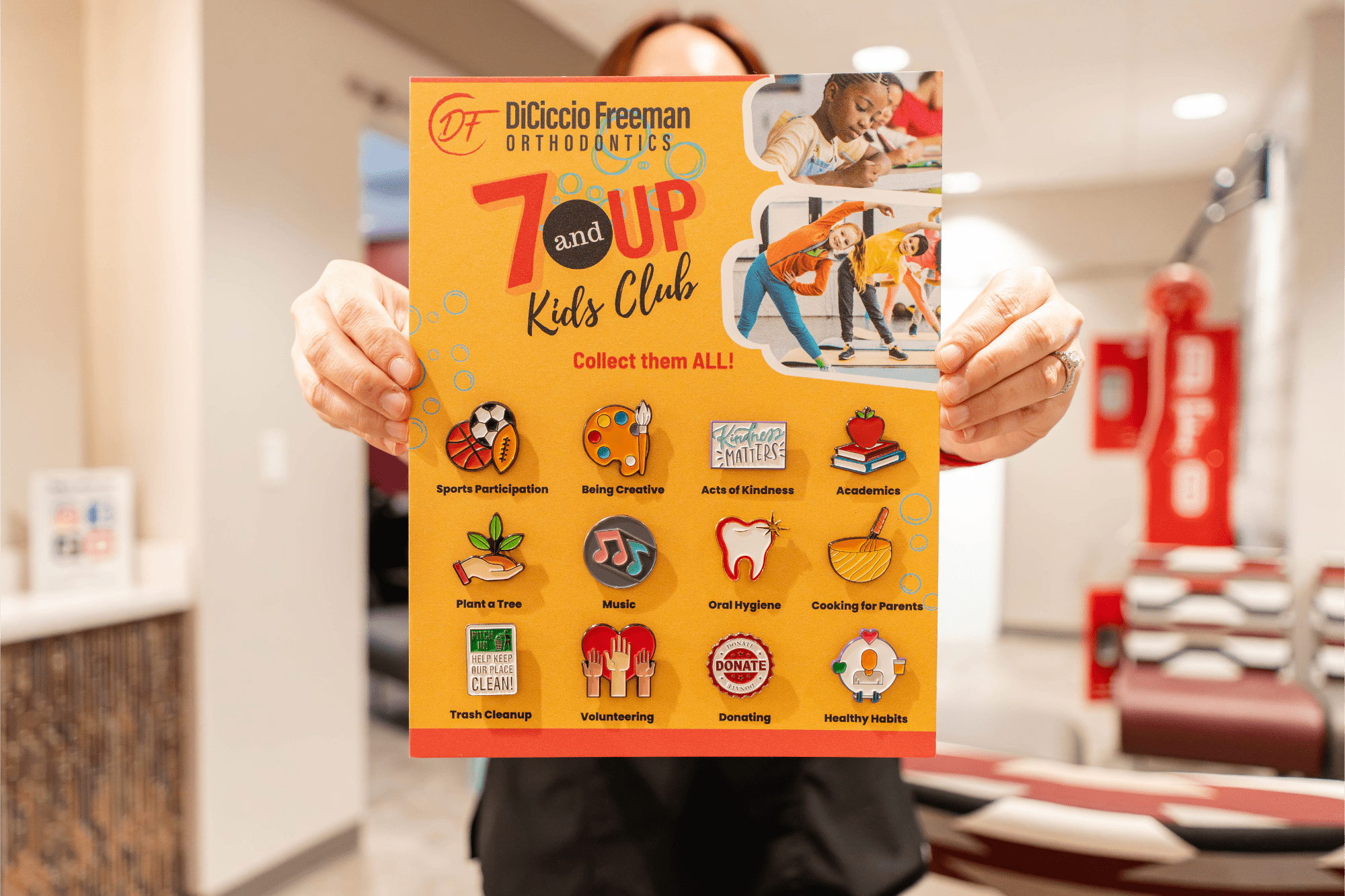
Benefits of Early Treatment
What if Dr. DiCiccio, Dr. Freeman, or Dr. Lucas do find that your child could benefit from early treatment? If you’re unsure about going ahead, we totally get it.
Early orthodontic treatment can sound a bit daunting! But rest assured, your child is in expert hands with DiCiccio Freeman Orthodontics.
Our comfortable, fun, and family-friendly offices in Clovis and Fresno will help you and your kids feel at home.
And since information always helps, we’ve collected the ins and outs of early orthodontic treatment in this post to help you familiarize yourself with the process.
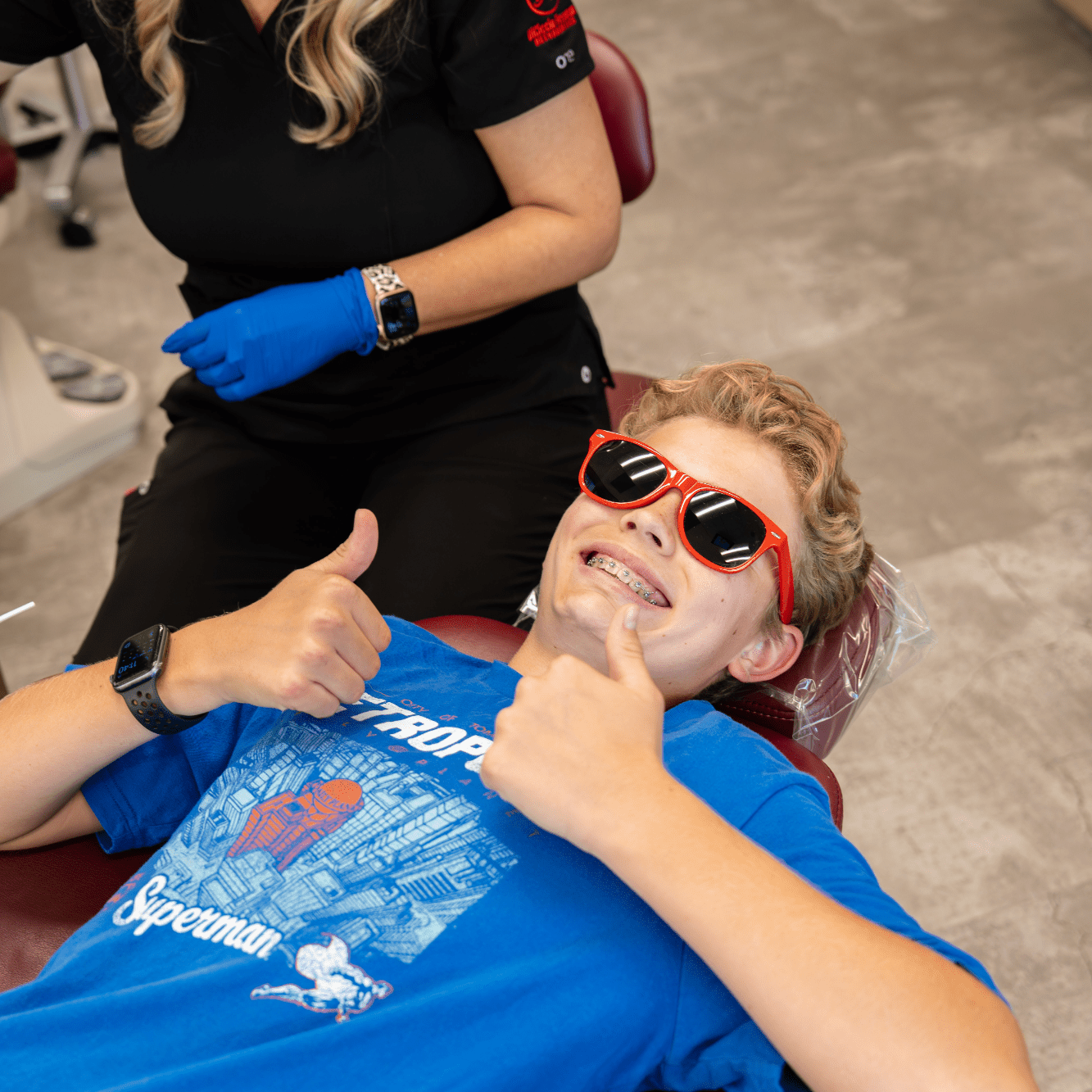
Signs to Look for in Your Child’s Smile
Here are a few key indicators to look for to know if your child needs orthodontic treatment:
- Crowded or missing teeth
- Premature or delayed loss of baby teeth
- Challenges in biting or chewing
- Speech difficulties
- Prolong pacifier use
- Narrow palette
- Underbite
- Crossbite
- Open bite
Orthodontics for Teens
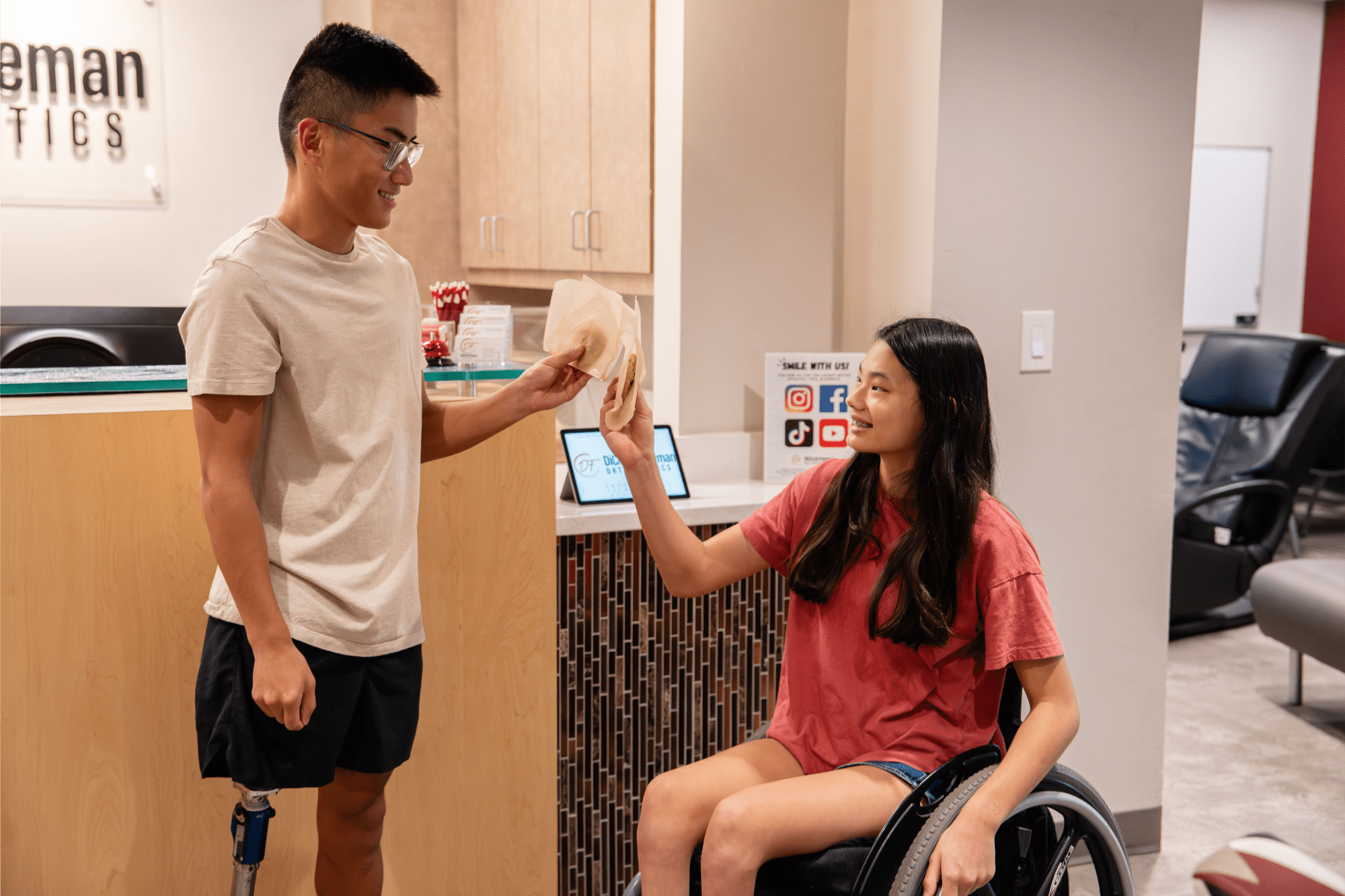
Creating
Confident Smiles
Giving your teenager the gift of a healthy, beautiful smile is huge! The confidence they gain carries over into every aspect of their life, including school and relationships.
At DiCiccio Freeman Orthodontics, we take that responsibility seriously. That’s why we offer personalized treatment plans to bring out the best in your teen’s unique smile.
We’re also well aware of just how busy today’s teenagers and their families are and we strive to make treatment as convenient as possible.
Treatments Made for Teens
Every teen’s orthodontic path is different, with treatment lengths typically lasting from 14 to 24 months.
At DiCiccio Freeman Orthodontics, we use the latest orthodontic treatments to reduce treatment times and create your teen’s dream smile faster with the same great results.
Dr. DiCiccio, Dr. Freeman, and Dr. Lucas will discuss all available options with you and your teen. Our mission? To deliver efficient, comfortably orthodontic solutions that meet your teens’ needs, whether they’re in the classroom, on the field, or in the spotlight.
Clear Aligners
Clear aligners are great — especially if your teen prefers the discretion of transparency.
Clear aligners for teens are often designed for your teen’s specific needs. For example, the plastic aligners have special tabs at the back to accommodate your teen’s growing molars.
The aligners may also include blue markings on the plastic that wear off to ensure your teen is wearing their aligners as often as prescribed.
You’ll also get a few extra sets of clear aligners in case they get lost.
Phase 2 is all about designing a smile that’s straight, functions properly, and remains stable so your child will have healthy, beautiful teeth for the rest of their life. If Phase 1 is like the pitch, Phase 2 is like knocking it out of the park!

Custom Braces
With braces, we’ll do a quick and painless video scan. The software we use chooses the ideal braces brackets shape for the best possible outcome. Then, Dr. DiCiccio, Dr. Freeman, or Dr. Lucas attaches the brackets to your teeth using custom 3D printed trays.
Because your braces are custom, you’ll have fewer adjustments and appointments. We also see less inflammation and discomfort and less time wearing braces, with better results!
Orthodontics for Adults
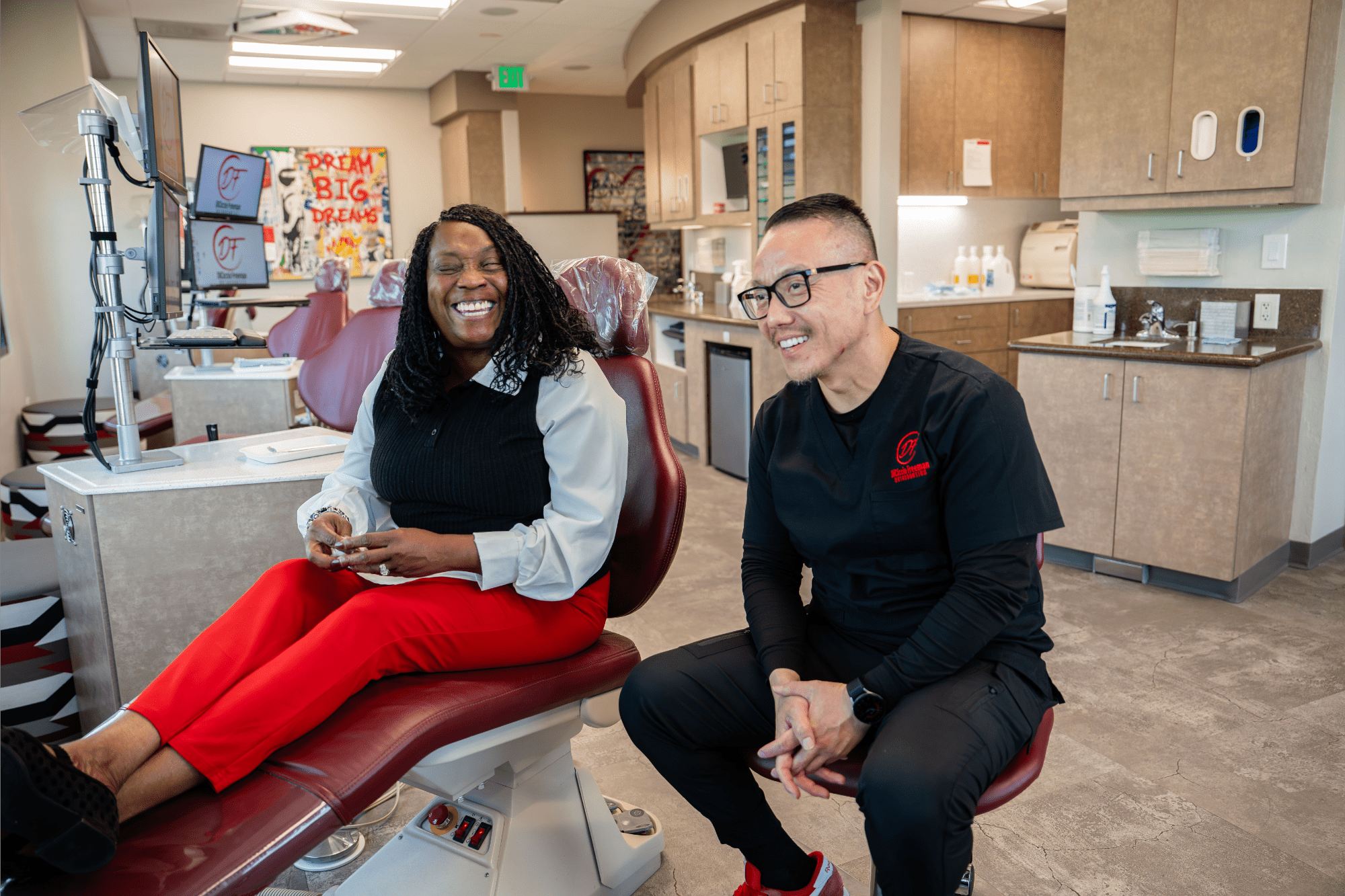
Smile Solutions
for Grown Ups
Think braces are just for kids? Think again! There’s never been a better time to straighten your teeth.
More than one in four orthodontic patients are adults, and today’s treatment options go far beyond conventional braces.
Whether you had braces years ago but forgot to wear your retainer or never had the opportunity to seek treatment, we offer a customized smile design. The best part? We make it convenient and enjoyable!
Advantages of Adult Treatment
Subtle Treatments
From board meetings to date night, you have a right to keep your treatment under the radar. That’s why we provide clear aligners and clear braces.
We craft these treatments to blend in with your smile to keep your treatment unnoticeable in both your professional appearance and daily life.
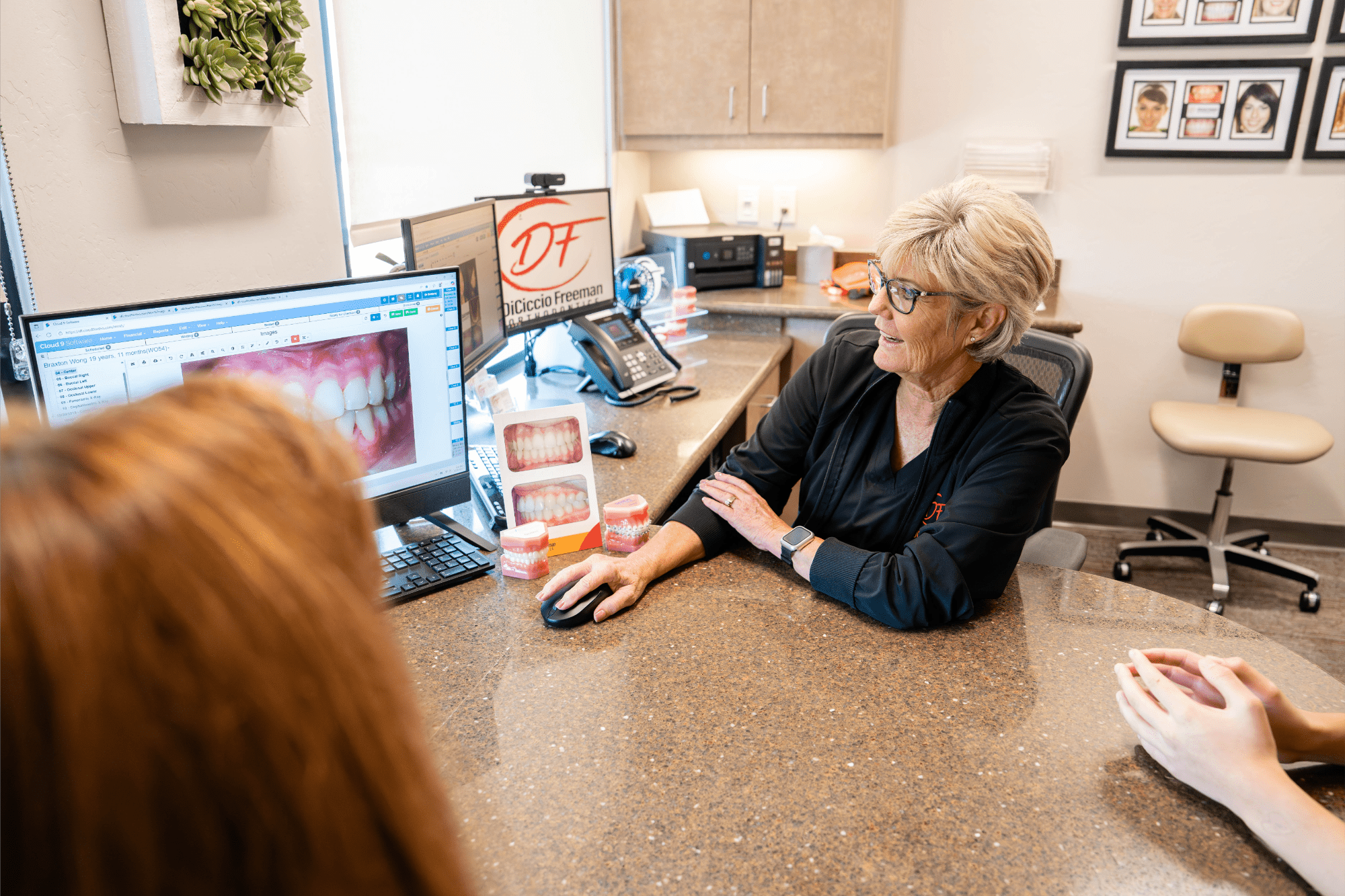
Tailored Experiences
Every adult patient brings their own unique background and specific goals to their smile journey, so we build our treatment plans to address what makes you different.
From tackling previous orthodontic work or building a flawless smile for the first time, you’ll be set on a path that prioritizes you first.

Why Choose an Orthodontist?
If you’re considering perfecting your smile with braces or clear aligners, visiting trained orthodontists like Dr. DiCiccio, Dr. Freeman, or Dr. Lucas is the best way to get the results you want.
Our doctors have the knowledge and training to determine what’s causing your malocclusion (improper bite) and to develop a personalized treatment plan to safely and effectively fix it.
Orthodontics is more complicated than just gluing on some brackets or printing out aligners. It requires a lot of planning because it causes permanent changes in your anatomy.
An expert like Dr. DiCiccio, Dr. Freeman, or Dr. Lucas can find the perfect balance between cosmetics and function for outstanding results that last a lifetime.
Begin Your Family’s Journey Today
Join us at DiCiccio Freeman Orthodontics to begin your path to a new, healthier smile for every member of your family.
Reach out to us today and schedule your free consultation and experience an office that goes the distance to make your family feel like a part of our family.
